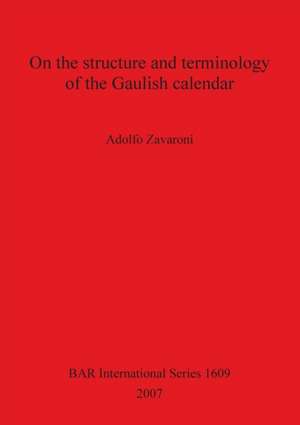On the structure and terminology of the Gaulish calendar
Autor Adolfo Zavaronien Limba Engleză Paperback – 15 mar 2007
Preț: 306.30 lei
Nou
Puncte Express: 459
Preț estimativ în valută:
58.62€ • 63.65$ • 49.24£
58.62€ • 63.65$ • 49.24£
Carte tipărită la comandă
Livrare economică 23 aprilie-07 mai
Preluare comenzi: 021 569.72.76
Specificații
ISBN-13: 9781407300269
ISBN-10: 1407300261
Pagini: 102
Dimensiuni: 210 x 297 x 7 mm
Greutate: 0.42 kg
Editura: British Archaeological Reports Oxford Ltd
ISBN-10: 1407300261
Pagini: 102
Dimensiuni: 210 x 297 x 7 mm
Greutate: 0.42 kg
Editura: British Archaeological Reports Oxford Ltd
Notă biografică
Adolfo Zavaroni
